
Corriere della Sera is an Italian daily newspaper published in Milan with an average circulation of 246,278 copies in May 2023. First published on 5 March 1876, Corriere della Sera is one of Italy's oldest newspapers and is Italy's most read newspaper. Its masthead has remained unchanged since its first edition in 1876. It reached a circulation of over 1 million under editor and co-owner Luigi Albertini between 1900 and 1925. He was a strong opponent of socialism, clericalism, and Giovanni Giolitti, who was willing to compromise with those forces during his time as prime minister of Italy. Albertini's opposition to the Italian fascist regime forced the other co-owners to oust him in 1925.

Giovanni Battista Tiepolo, also known as GiambattistaTiepolo, was an Italian painter and printmaker from the Republic of Venice who painted in the Rococo style, considered an important member of the 18th-century Venetian school. He was prolific, and worked not only in Italy, but also in Germany and Spain.

Ca' Rezzonico is a palazzo and art museum on the Grand Canal in the Dorsoduro sestiere of Venice, Italy. It is a particularly notable example of the 18th century Venetian baroque and rococo architecture and interior decoration, and displays paintings by the leading Venetian painters of the period, including Francesco Guardi and Giambattista Tiepolo. It is a public museum dedicated to 18th-century Venice and one of the 11 venues managed by the Fondazione Musei Civici di Venezia.
Francesco Antonio Zaccaria was an Italian theologian, historian, and prolific writer.

Giambattista Pittoni or Giovanni Battista Pittoni was a Venetian painter of the late Baroque or Rococo period. He was among the founders of the Academy of Fine Arts of Venice, of which in 1758 he became the second president, succeeding Tiepolo.

The Gazzetta Ufficiale della Repubblica Italiana is the official journal of record of the Italian government. It is published by the Istituto Poligrafico e Zecca dello Stato in Rome.

Giuseppe Maria Orlandini was an Italian baroque composer particularly known for his more than 40 operas and intermezzos. Highly regarded by music historians of his day like Francesco Saverio Quadrio, Jean-Benjamin de La Borde and Charles Burney, Orlandini, along with Vivaldi, is considered one of the major creators of the new style of opera that dominated the second decade of the 18th century.
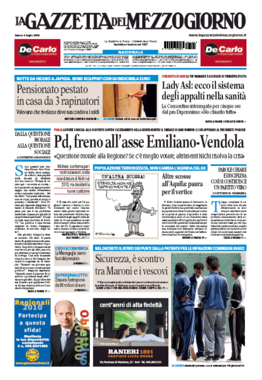
La Gazzetta del Mezzogiorno is an Italian daily newspaper, founded in 1887 in Bari, Italy. It is one of the leading newspapers published in Southern Italy, with most of its readers living in Apulia and Basilicata.

Gian Antonio Selva was an Italian neoclassical architect.

Bologna was a newspaper published in Bologna from 1642 to 1787. It is considered one of the oldest newspapers in Italy.

Il Messaggiere, from 1800 Il Messaggere, was a newspaper published in Modena between 1749 and 1859, with some interruptions during the Napoleonic era. It was the official newspaper of the Duchy of Modena and Reggio.

Notizie del mondo was a newspaper published in Venice from 1778 to 1812 and later in 1815. Along with the Nuovo Postiglione, it was the main newspaper covering foreign affairs printed in Venice in that time, arriving to circulation of more than two thousand copies.
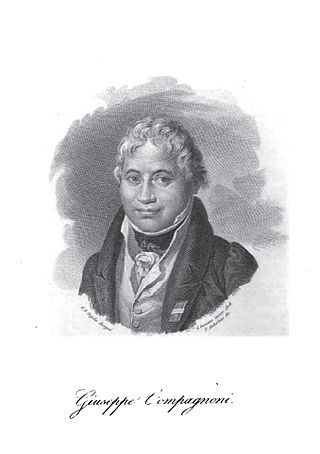
Marco Giuseppe Compagnoni was an Italian constitutionalist, writer and journalist, considered the "father of the Italian flag", since he was the first to propose the official use of the Italian tricolour for the flag of a sovereign Italian state, the Cispadane Republic, on 7 January 1797.
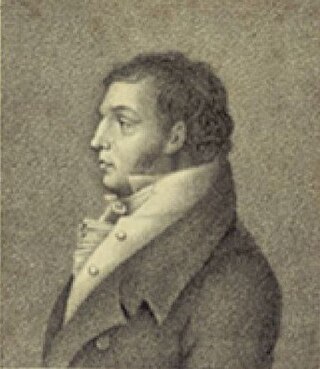
Eliodoro Bianchi was an Italian operatic tenor and later a prominent singing teacher. Born in Cividate al Piano and trained in Naples under Giacomo Tritto, he made his stage debut in 1793. Amongst the many roles, he created during the course of his 40-year career were Baldassare in Ciro in Babilonia and the King of Sweden in Eduardo e Cristina, both of which were composed by Rossini expressly for Bianchi's voice. He retired from the stage in 1835 and spent his later years in Palazzolo sull'Oglio, where he died at the age of 75.
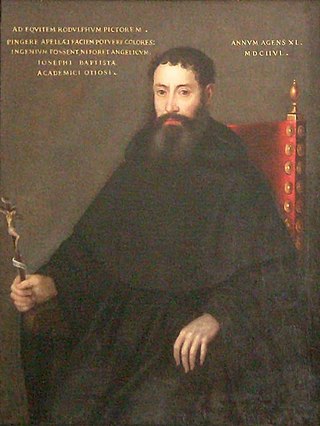
Angelico Aprosio was an Italian Augustine monk, scholar, and bibliophile.

Alessandro Gerbi, known as Sandro is an Italian journalist, author of several biographies and books on Italian contemporary history.

Tommaso Stigliani was an Italian poet, literary critic, and writer, best known for his enmity with Giambattista Marino.
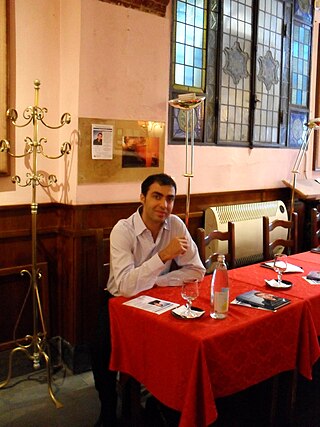
Menotti Augusto Serse Lerro is an Italian poet, writer, playwright, librettist and academic. His work explores matters of social alienation and existentialism, the physicality and vulnerability of the body, the interpretation of memories, the meaning of objects and the philosophical importance of human identity. In 2015 he published Donna Giovanna, l'ingannatrice di Salerno, an innovative feminine and bisexual version of the mythical figure of Don Juan, El Burlador de Sevilla, while in 2018 he wrote Il Dottor Faust, an original version of the character of Faust. In addition he is the author of a New Manifesto of Arts and the founder of the Empathic movement (Empathism) that arose in the South of Italy at the beginning of 2020.


















